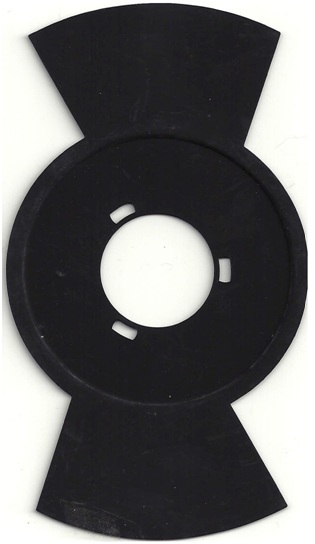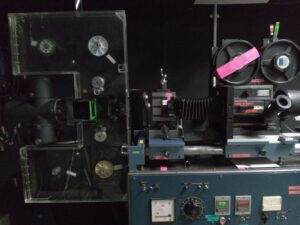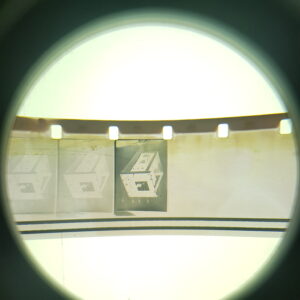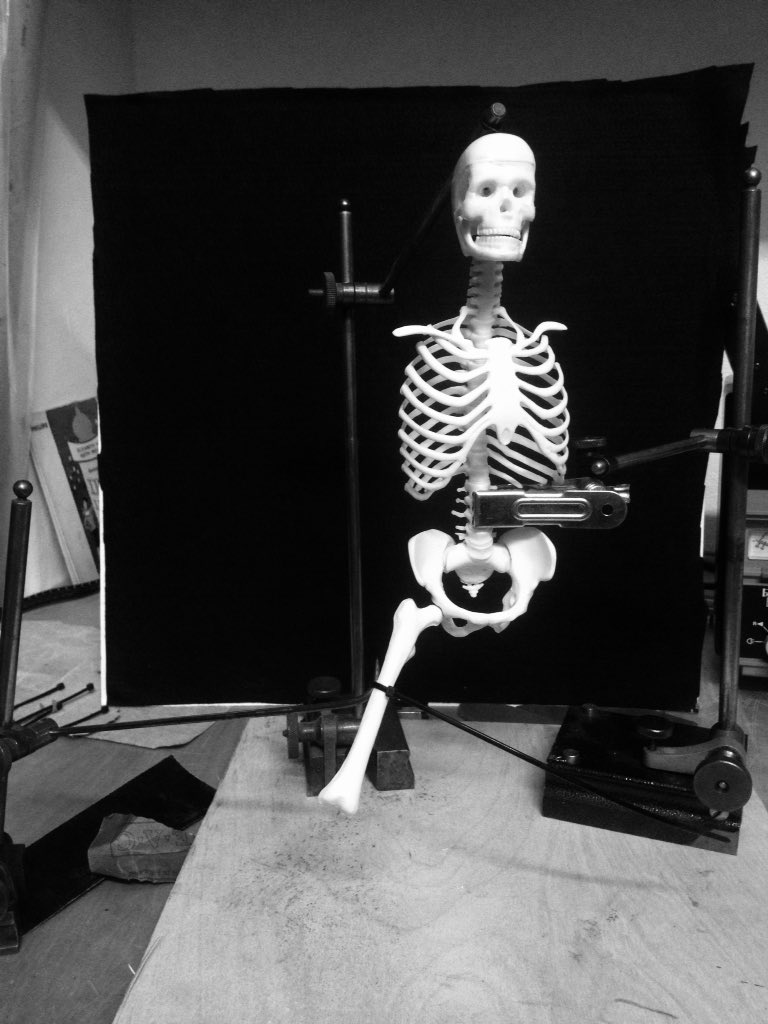FLICKER WARNING. THE CLIPS BELOW ARE STROBOSCOPIC AND FLICKER AT RATES THAT MAY DISTURB THOSE WHO SUFFER FROM PHOTOSENSITIVE EPILEPSY.
When we view a digital version of a work of early cinema our experience is notably different from when it would have been (could be) seen opto-mechanically. Of course digital viewing systems, whether DVD and CRT screen, Blu-Ray and HD TV, or even a cinema DCP, all offer different types of overall screening experiences partly through the agency of their personal nature as well as purely in terms of ‘image’.
But the very basic and intrinsic phenomena of flicker in opto-mechanical projection is so fundamental to that viewing experience that it seems a shock to learn that in digital versions of those same films (ie most silent films that are “restored” and viewed digitally) the flicker image, the image of the closed blade, the black, the resting place for the eye, the moving part of the moving image is entirely absent. In these digital versions the empirical qualitative image experience (you could argue) is significantly (perhaps radically) different from the original ‘kind’ of experience. In a way an instrumental trace of the projection apparatus has been ‘removed’ and perhaps becomes denied.
Enough to justify it being considered ‘impossible film’?
That is, in digital versions of silent (and other types) cinema, you are viewing an ‘impossible-to-history’ kind of image. It would and could have never been experienced that way. Modern revival, (re)discovery and cultural examination of silent cinema forms is largely possible, motivated and contingent upon this digital alteration and the access and qualitative possibilities it open up.
To try and illustrate this radical difference permit me to indulge………………..

This shutter from a 16mm projector shows 2 periods of dark and 2 periods of light. They are unequal but for the moment forget about this. Each period of light projects the same image frame. In 2 bladed shutters like this the frequency of the flicker is 96hz if the film frame rate is meant to be 24 fps. In one period of darkness the claw moves to its new position. In the next period of darkness the claw engages the film and pulls it down. In a 35mm intermittent type mechanism (driven by maltese cross) the second period of darkness is for the purpose of flicker stability as the pull down happens completely in one period of darkness. In every single rotation of the blade we get – frame / black / frame / black. 4 pulses if you like and 24 x 4 = 96. This is why the following tests are called Quad tests. They are attempts at producing a virtual digital blade that repeats each picture twice with 2 closed/black periods.
This clip, after many tests with the fps speed look about right at 13fps (see previous post). Here’s the clip, digital assembly from a single jpg scan or each frame, running at 13fps.
Heres the clip with a QUAD structure. That is 2 picture frames and 2 black frames. 13 x 4 = 52.
So the movement that the actor makes is the same speed as above, but there is now truck loads of flicker, 52hz to be precise, 52 changes per second.
Firstly, almost before the flicker you notice how much darker it is. Well this could be down to your screen, or the ability of any LED screen to reach full brightness after full blackness. It could be a perceptual issue as if you download the clip and watch a frame at a time it looks brighter. None of these scans have had levels adjusted so later on we could compensate by boosting brightness, etc.
Next clip says 39hz. 39 / 4 = 9.75. So the FRAMERATE for this test is 9.75fps but the frequency is 39hz.
Lastly, clip 3 shows 26hz. 26 / 4 = 6.5 fps. This very slow, but still a reasonable speed to turn a hand cranked mechanism if you were not very fit or were not used to it or both.
After watching these clips over and over again, apart from hallucinating and becoming mildly obsessed, I actually begin to feel the presence, beyond the flicker, of the projection mechanism. They are kind of jerky, on my PC they don’t run smooth and in clip 39hz the converter I got did a bad job of it with glitches and pixels everywhere. But, still, in there somewhere is the ‘feel’ of a projector. The rhythm and the pulse of the machine, the projector.
Next I’ll be working on uneven percentage virtual blades. That is blades where say instead of 90/90/90/90 degrees as in these QUAD tests, we will try 135/45/135/45 degrees where the 135 is picture frames. Of course we know enough about physics to know that the picture, its brightness and perceptual fidelity will start to increase. Now I’m off to prepare for human extinction. All the best!
Here’s a link to a folder with the files to download if you wish.
https://www.nachleben.org.uk/skomer/man-uploads/RESOURCES/VIDEO-FILES/QUAD-TESTS-flicker/
Here is 2 cycles of these tests, regardless of the frame rate. Each cycle (of the virtual blade) we get – picture , black, picture, black. The same picture projected twice in each cycle (like a 35mm 2 blade shutter). To create a 135/45 shutter, the sequence will be picture, picture, picture black – picture, picture, picture, black. Several configurations will be tried until we get to the one most closely looking like film projection. Then the last detail will be working on the ‘knee’ or tiny fade ins/outs that soften the ‘cut’ between frames. This digital discrete frame ‘cutting’ is like square waves and that’s not how it works in practice. Film blades cut quickly, but not instantly. It remains to be seen how this can be measured.

End note.
Personally, for me (not without a modicum of irony) I actually enjoy the digital versions the most. Accepting the materiology of the medium and its own specific nature (impossible film?) frees the film (model image? The strip, manually beholden) from the projection mechanisms effect of flicker BUT, and more importantly ‘allows’ the perception of a new flicker, that produced by uneven light levels (effect of hand cranked camera) and the grain, noise, dirt, damage and wear that are all materiologically bound to the nature of the film strip. I mentioned years ago during a symposium in Amsterdam that watching scanned/digitised early footage was like seeing film ‘on a stretcher’. You can see more.
Do check out the wonderful Curzon Cinema in Clevedon where this film was found and the detective hunt is on to try and identify it and the players who feature in it.


